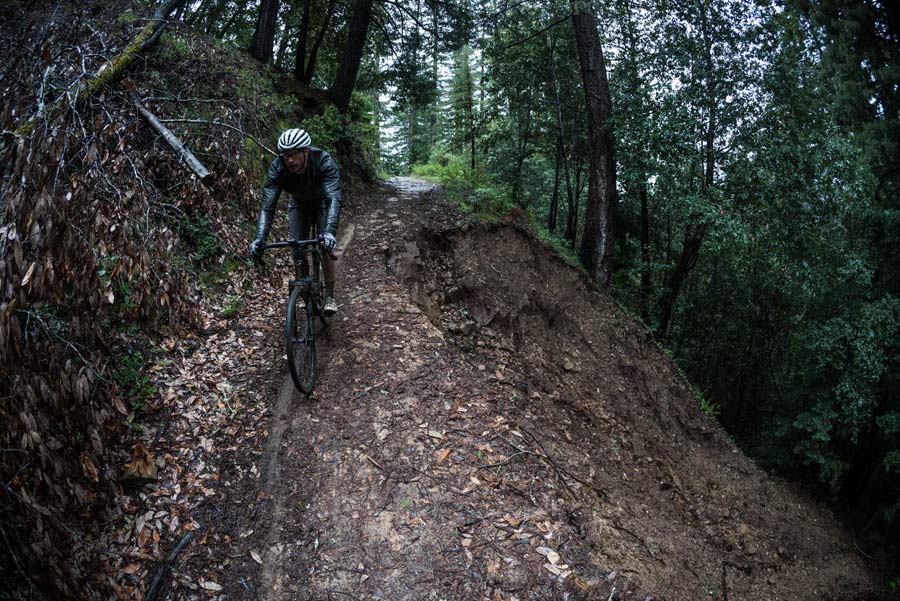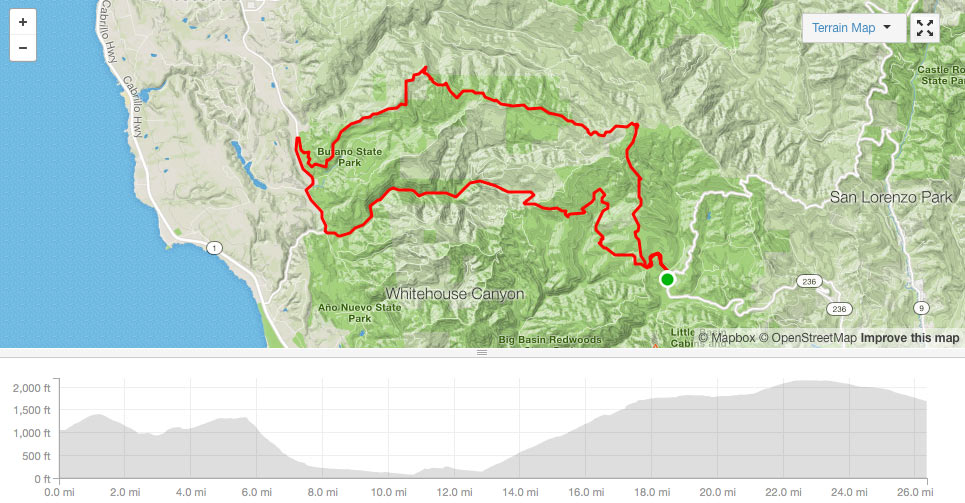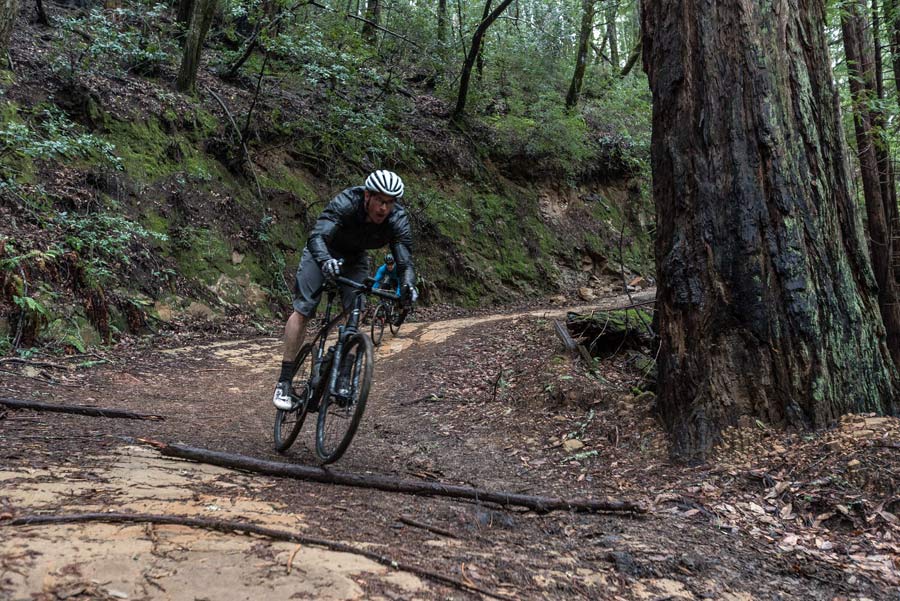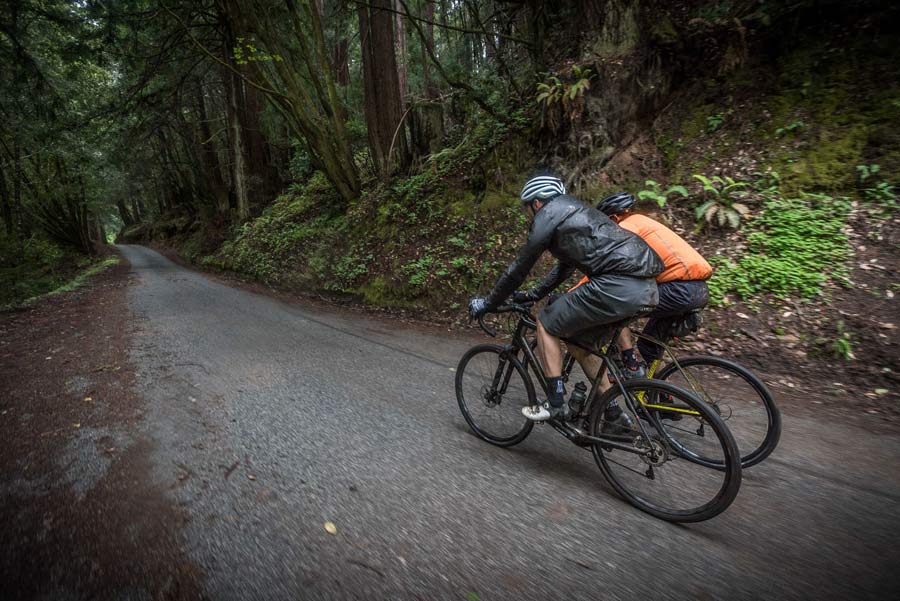Just prior to Sea Otter, we attended the Fox 32 Step Cast AX launch, got the details, then headed out to Big Basin Redwoods State Park for a monster test ride in the cold and rain. We covered 26 miles in 50º (or colder) weather that varied from gray and cloudy to a light drizzling rain. And we climbed about 2,800 feet, give or take depending on who’s computer you trusted (mine read 2,730 but others claimed more than 3,000). And it was virtually all on gravel or dirt forest service roads that were showing the effects of all the recent rain and storms. Basically, it was the perfect ride to test a suspension fork on a gravel bike…
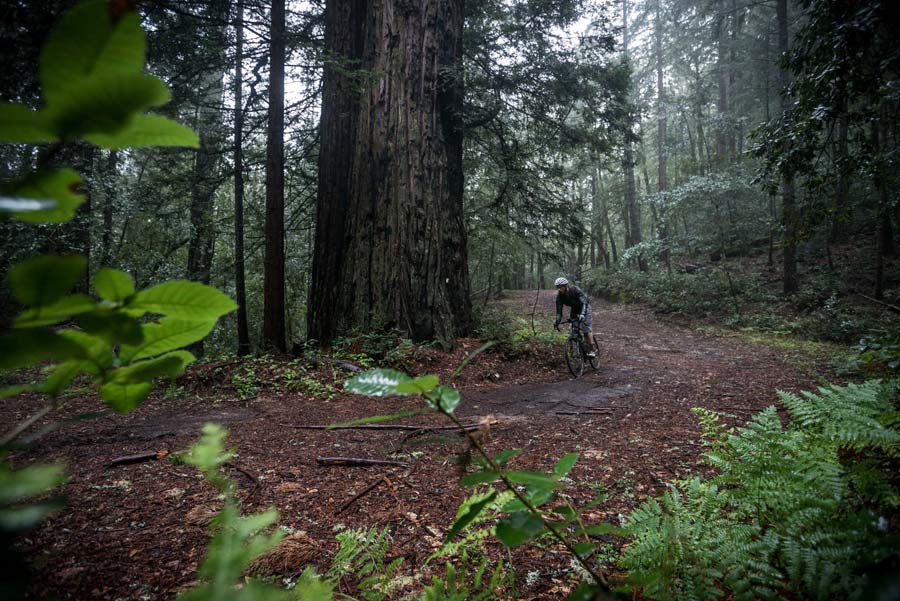
Ever been on a ride where the temperature slowly drops and things just keep getting wetter until your hands are freezing and it’s just a little bit difficult to manage the braking? That’s kinda what happened on this fine April day. And had the bike used a rigid fork, I’m pretty sure I’d have been hating life after almost five hours in the woods (3:13:35 moving time, plus lots of dorking around, per usual).
Instead, because the bike did have front suspension, my hands stayed put and mostly comfortable, and I remained in control of the bike (except for that one high-speed bail into the bushes…but it wasn’t the fork’s fault and is a story for another time…pretty sure I need new brake pads after this ride, though).
The AX has a lot of adjustability for having just 40mm travel. It’s basically the FIT4 cartridge, so you’ve got three settings with micro-adjustments of the Open setting. It might be overkill, but it works. And you’ve got air volume spacers on the other side to tune the air spring and curve. I haven’t fiddled the volume it because it worked fine as is, but I’m betting I could make it a bit more sensitive to the little stuff by doing so.
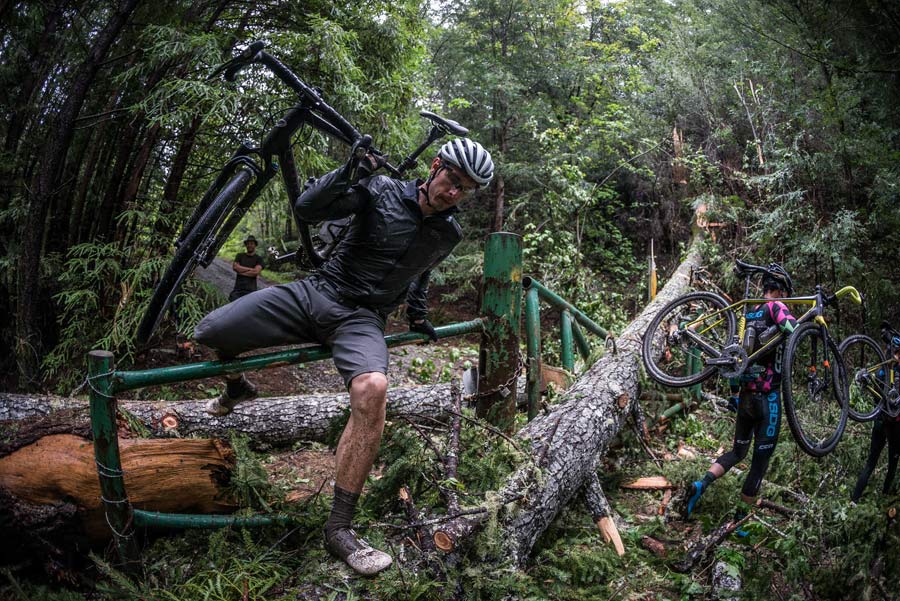
As is, its effects are far more noticeable at speed or when I hit something “big”. And by big, I mean over a centimeter. Like when grinding up a climb and hitting a single stick or gap in the ground. Otherwise, you’re still being tossed around if you’re plucking your way through a root or rock garden at low speed. Which would happen with a long travel fork, too. It’s just the nature of the beast.
Where it shines is when you’re hitting all this stuff at speed…
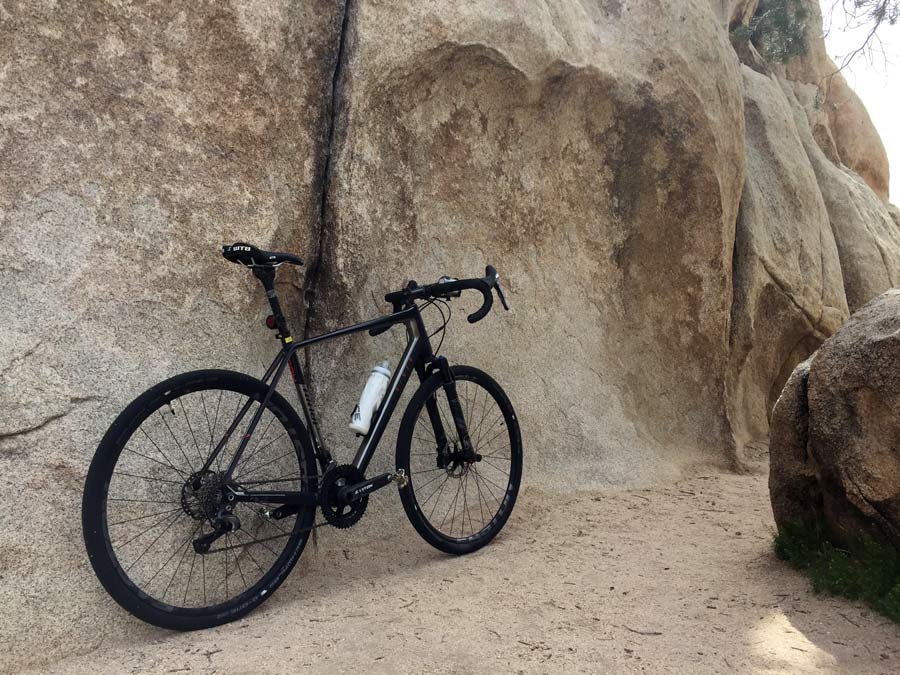
…like washboard gravel roads. Following Sea Otter, we rolled through Joshua Tree National Park and rode about 40 miles of mostly pavement, because the trails are off limits to bikes. But, the access roads to trail heads and camping areas aren’t, so we used those to “ride gravel”. If I maintained a decent speed, maybe 13+ mph, the fork would mitigate the washboards well enough. I kept it in the Open setting for this, the other settings didn’t do enough on bumpy stuff at speed. Back on the road, I set it to Firm. Medium has its place on regular gravel roads without washboards if you’re hammering at a good clip.
The inevitable comparison is to the Lauf Grit, not the least of which because two of our friends from Lauf were road tripping with us home from Sea Otter through Joshua Tree. The AX, in its current iteration, which Fox admits is sort of an experiment to gauge demand, is heavier and has more unsprung weight, but it also has 10mm more travel. Judging from the wind noise at 42mph, it’s far less aero than the Grit. But, it provides adjustability based on rider weight and terrain. It has more traditional looks, but may not clear all frames’ downtubes. They’re almost kind of different animals even though they’re aimed at the same category.
Where the Fox AX fork shone for me was on the really aggressive descents and at speed. There’s certainly a place for it if your “gravel” rides are more like XC trails, or you’ve got a lot of roots, rocks or ruts but still wanna go really fast. Had it not been for the AX, hours of riding in the low 40º’s F with wet gloves and resulting reduced finger dexterity would have been a safety issue at the speeds we were descending. With it, I could maintain control and traction, which let me ride faster and more confidently, which is what any good suspension should do.
